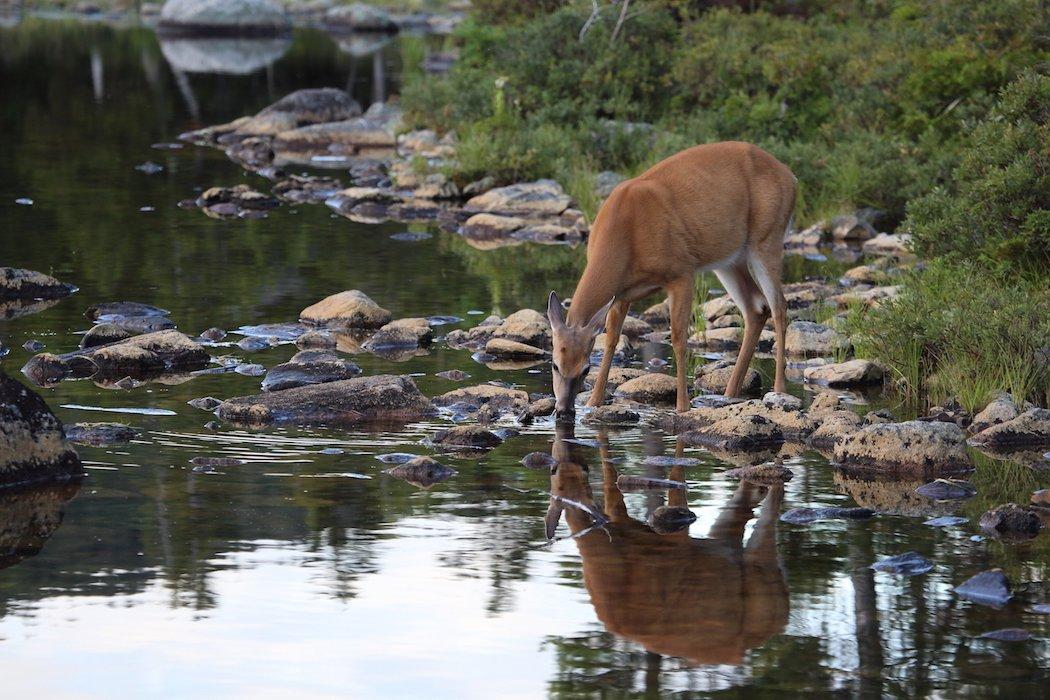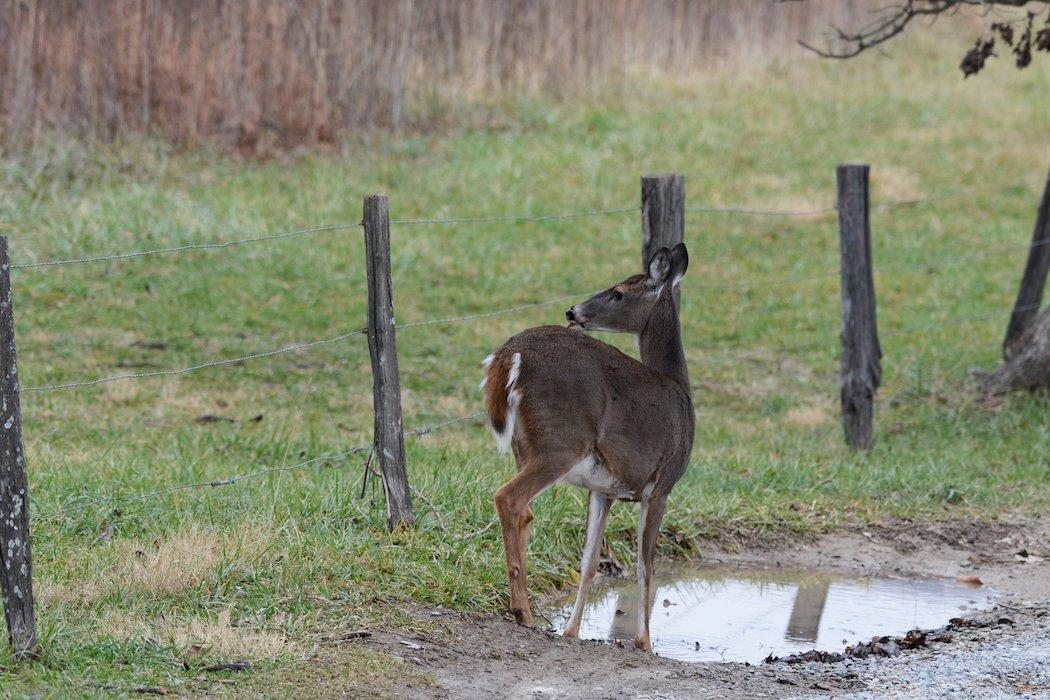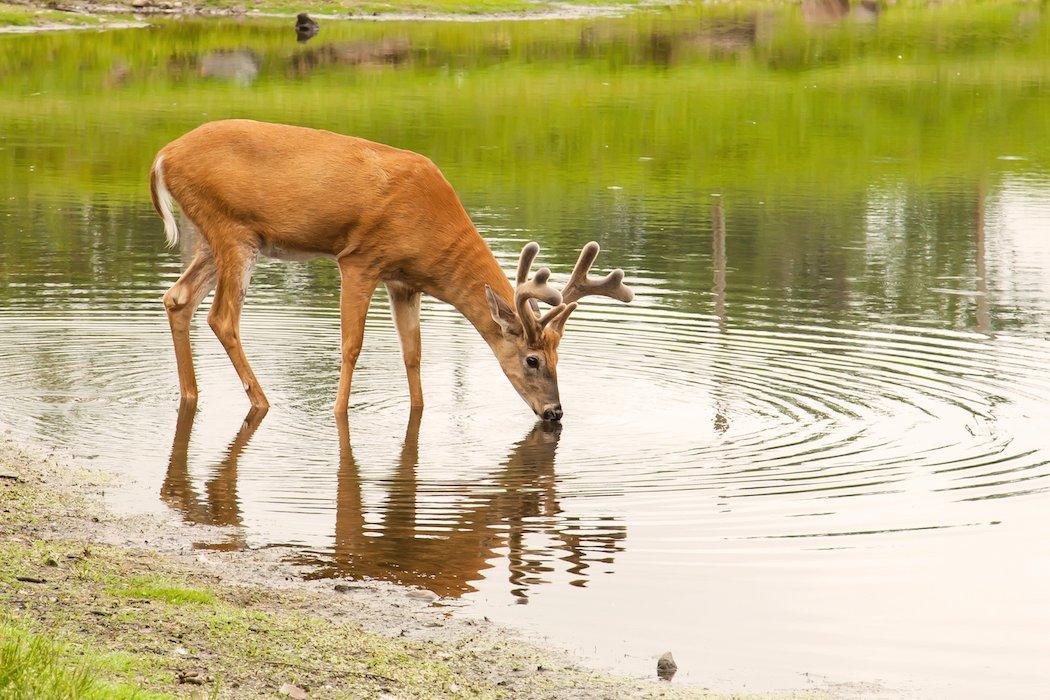Many deer hunters hunt private property. Most hunters who hunt private ground tightly manage the property they are hunting. Hardcore whitetail hunters plant food plots, create bedding areas, feed minerals and have antler restrictions in place so bucks can grow to reach a mature age. The missing ingredient on many properties is water, though.
According to hunting land expert, Craig Johnson from Wisconsin, if money is tight, planting one less plot and putting in a small pond is a good idea. If you don't want to skimp on food plots, there are other options.
When most people think about digging a pond on their property, they envision a large pond (a few acres) that is dug with a crane or bulldozer and costs thousands of dollars. However, a pond that deer will drink out of can be dug for much less, Johnson said.
Johnson has several ponds on his property. Some are large and some are small. Many of them aren't extravagant. They look more like small mud holes than a pond. What they look like doesn't really matter. The question is will the deer drink out of them.
The ponds on my property that get the most action are small remote ponds that aren't any bigger than a car. These ponds can be dug in a few hours with a shovel, Johnson added.
Johnson has a few low areas on his property where he dug a depression into the ground and let rain water fill it. He builds them with wings on the side that channel rainwater into the pond and has banks on a couple sides to hold the water. He often has a low side that offers easy access for the deer. Since these ponds aren't large and aren't spring fed, the problem is keeping water in them in the late summer and early fall.
To keep water in the ponds, I dig them fairly deep without much surface area so the water doesn't evaporate quickly, Johnson said.
Jim Reed, a hunting property manager who is also located in Wisconsin, compares small ponds to a glass of water.
If you put water in a glass and come back the next day, there will still be water in the glass because there isn't much surface area for the water to evaporate and the glass is fairly deep. If you spill a glass of water on a table and come back the next day, the water will be completely evaporated. The less surface area and more depth a small pond has, the better, Reed said.

My small ponds see a lot of activity, especially during the early bow season in Wisconsin. My wife has a favorite treestand right over the top of a small pond we dug. Hunting over one of these waterholes is almost as good as hunting over a waterhole for elk out West. After the deer know it's there, they start using it almost daily. Ponds make a dynamite hunting spot when October arrives, Johnson said.
Some of us don't have any low ground on our property where water can pool up, and even if a small hole is dug in some parts of the country, water will quickly disappear in a hole in the ground if the soil is sandy. Even in these types of soil conditions, there are options.
A pond liner can be purchased at a lawn and garden store and will work fine for a small pond. The great thing about digging a small pond is you don't need a large liner. A liner will cost less than 500 dollars, Reed said.
If that's more money than you have in your pocket right now, a tarp or small watering tank is another possibility.
Some tarps are thick enough to hold water. Deer don't care if the pond is pretty, they just need water to drink. I see many property owners using livestock tanks or kiddy pools as ponds. The benefit to a watering tank is most of them have a plug on the bottom so they can be drained. Many property owners dig a hole in the ground, put the tank in the hole and at the end of the hunting season, they pull the plug and drain the tank. Livestock tanks are a great choice because property owners can drive up to them with an ATV and fill them up with water if they have a water sprayer on their ATV. Many people who use livestock tanks visit the tank occasionally and fill it up, Reed said.
But livestock feed tanks can be pricey. I've had friends who have split a plastic 55-gallon drum in half and filled it with water. It doesn't look pretty but deer, birds and other critters visit it daily during the summer and fall. I think adding water to a piece of property, regardless of the size, can increase the chance of seeing and bagging bucks. Deer need to drink and if they feed and bed on your land, but you don't have a water source, they will leave your property to find one. Offering water keeps deer on your property, Reed said.
Some may look at a muddy hole in the ground that is full of water and think that deer wouldn't drink out of it but this is not the case.

Make sure you do the little things correctly when putting in a water source. Like your favorite food plot, placement is everything. Don't just put your pond in the middle of a field or somewhere deer don't frequent. Think things through before getting the shovel out.
I put my ponds in shaded, secluded areas where the deer feel safe and where the sun can't beat down on the pond all day which prevents it from evaporating quickly, Johnson said. The pond my wife and I like hunting is secluded and we often sit over the pond watching deer for hours. Bucks will come in, get a drink and chase each other around it during the early season. A secluded pond is a great place for deer to congregate, Johnson said.
If your heart is set on a nice-looking pond with a bubbling brook and trout swimming around and you don't have deep pockets, there is another option. Contact your local Soil and Conservation District or DNR and inquire about cost-sharing programs.
With the economy at its current state, many federal programs that help with the cost of digging a pond have dried up but there are some state programs that will help cover the cost of putting in a pond if it benefits wildlife. Soil and Conservation Districts will give good advice about attracting more wildlife, so calling them has several benefits. I utilized one of these programs when I dug one of my larger ponds. It greatly reduced the out-of-pocket expense for me, Johnson said.
Do you want to see more wildlife on your property? Do you want to keep the deer on your property morning, noon and night? Put in a small pond and wildlife will utilize and benefit from it. And hopefully you will too come fall.
Don't Miss: 5 Watering Habits of Mature Deer
Are you a deer hunter wanting to learn how to accomplish your goals? Check out our stories, videos and hard-hitting how-to's on deer hunting.

